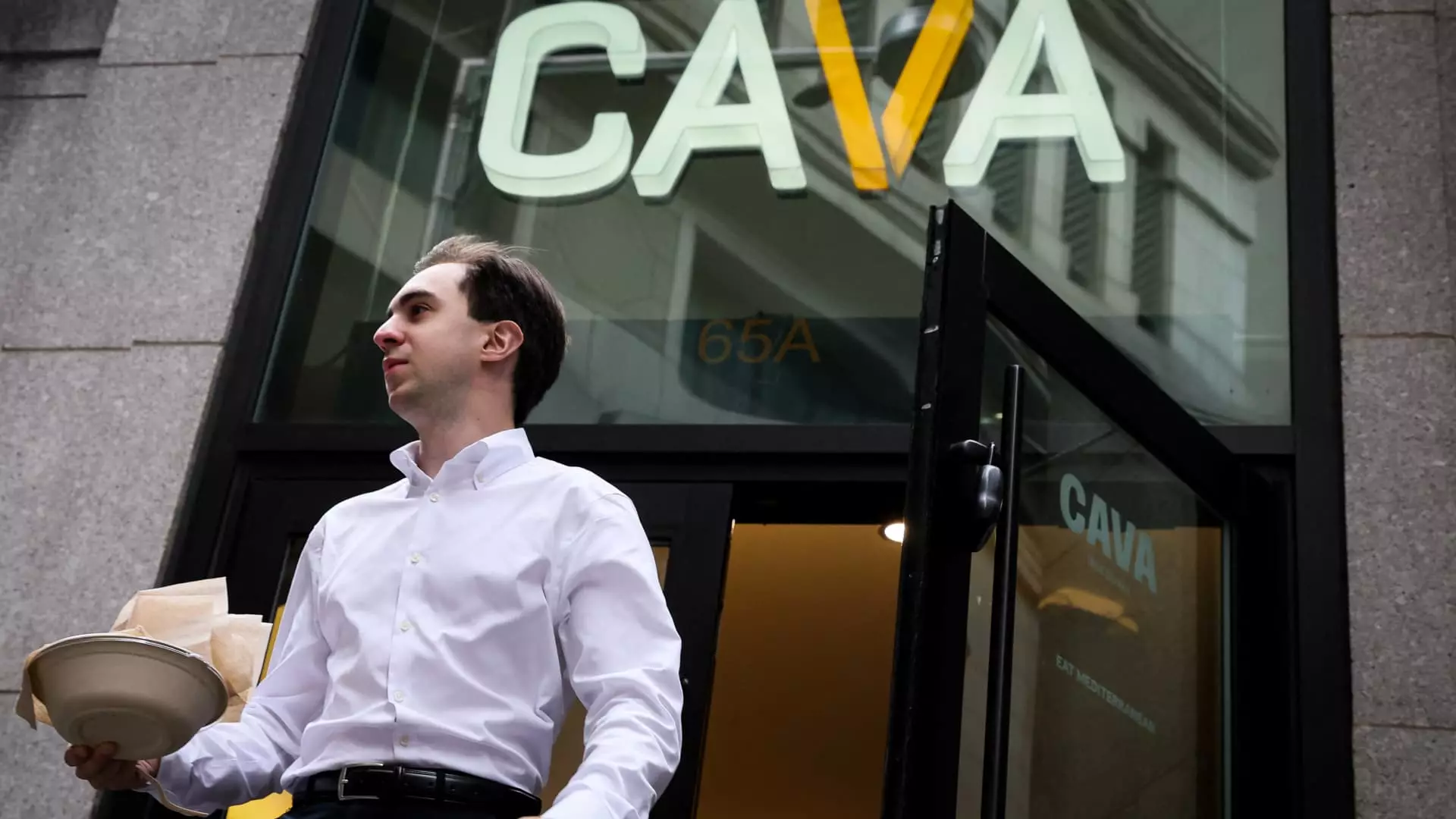In an era where economic uncertainty reigns supreme, Cava emerges as an unlikely hero amidst the malaise that has settled over much of the restaurant sector. With a staggering 10.8% growth in same-store sales reported for the quarter ending April 20, what lessons can we distill from this Mediterranean chain’s remarkable performance? The restaurant industry has suffered greatly as consumers have tightened their purse strings, yet Cava has navigated this challenging landscape with aplomb. This is not merely a testament to their culinary offerings but a call to arms for other establishments struggling to sustain their profit margins during these hard times.
Cava’s ability to attract increased traffic—7.5% in this case—suggests that diners are shifting their preferences. Instead of succumbing to the fast-food world or the casual dining collapse exemplified by companies like Chipotle and McDonald’s, patrons are opting for more elevated yet convenient dining options. This trend towards “trading up,” where consumers choose higher-priced items from chains like Cava over cheaper fast-food options, underscores an important shift in the market that holds valuable insights for other businesses.
Consumer Behavior: The Desire for Quality
The data emerging from Cava’s performance reflects a broader consumer sentiment: a preference for quality over quantity. CFO Tricia Tolivar’s assertion that customers are indulging in higher-priced items such as house-made juices and premium snacks reveals a pivotal change in dining habits. In an age where social media plays a key role in shaping consumer choices, diners are increasingly interested in curated experiences that promise both health and flavor.
This inclination towards health-conscious dining is not just a fad; it’s indicative of a long-term trend that restaurants should heed. While other players in the industry continue to cut costs and sacrifices cornerstones of quality, Cava’s commitment to premium ingredients and delightful dining experiences has set it apart in a crowded marketplace. The demand for better dining does not merely reflect a gimmick; it signifies a powerful undercurrent where consumers are less price-sensitive and more quality-focused—a notion that could define the future of dining.
The Impact of Economic Factors
Yet, the broader implications of Cava’s outstanding performance cannot be overlooked. While the restaurant industry collectively grapples with consumer cutbacks, spooked mainly by economic uncertainty, Cava’s results shine a light on what businesses might do to evolve and adapt. It is vital to interpret their success as a critique of an industry that has not adequately addressed the needs of a changing consumer base. Should Cava’s competitors remain fixated solely on slashing prices, they risk further alienating a consumer group in search of enriching dining experiences.
Diners feeling the pinch of inflation might be inclined to spend more on meals that promise value and satisfaction, rather than opting for mere sustenance at a discount price. Cava’s approach to enter the market with an emphasis not just on cost, but on an enriching experience, provides a blueprint for other restaurants to reevaluate their strategies.
Surprising Stock Market Reactions
Despite its robust quarterly performance, Cava shares fell 5% in after-hours trading, highlighting a paradox often faced by growth-oriented companies: the disconnect between market expectations and economic realities. Investors appear wary, preoccupied with an outlook of conservative growth for the fiscal year. It’s a perplexing stance given that the restaurant has managed to surpass a critical revenue milestone—over $1 billion in net sales on a trailing basis.
This skepticism reflects the fragile psyche of investors in the current climate. Despite tangible metrics indicating robust growth and the anticipation of opening a higher number of locations than previously projected, fear of macroeconomic headwinds looms large. It’s a classic case of the market struggling to balance solid operational metrics with pervasive fear, urging us to question whether the market is slowing rather than responding to genuine growth potential.
The Power of Strategic Decisions
A defining feature of Cava’s strategy has been its ability to remain flexible in response to consumer preferences while still adhering to a clear vision for expansion. Utilizing methods that cater not only to diverse tastes across various income brackets but also to the fluctuating economic environment is where Cava truly excels. Other companies may want to observe and learn from Cava’s approach, particularly the intertwining of menu innovation with external economic fluctuations and consumer expectations.
The bottom line is this: Cava serves as a beacon of hope for an entire industry that is actively battling against consumer confinement and uncertainty. Their growth amidst broader contractions in the market serves as both inspiration and a cautionary tale—reminding us that flexibility, quality, and understanding consumer desires can yield fruitful results even in times of turmoil.

